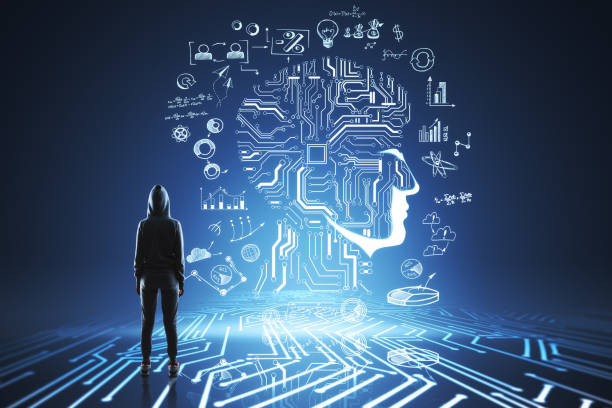What is Artificial Intelligence? Basic Definitions and Concepts

What is Artificial Intelligence? Basic Definitions and Concepts
#Artificial_Intelligence (or AI) is a branch of computer science that deals with building machines capable of performing tasks that typically require human intelligence.
This broad definition includes abilities such as learning, reasoning, problem-solving, natural language understanding, and machine vision.
In simple terms, artificial intelligence attempts to create systems that can think and act.
To better understand this, we can divide artificial intelligence into two general categories Wikipedia:
-
Weak or Narrow AI: This type of AI is designed to perform a specific task and performs very well in that area.
Examples of weak AI include facial recognition systems, spam filters, and virtual assistants like Siri and Alexa. -
Strong or General AI: This type of AI is capable of performing any task that a human can perform, as well as or even better.
Strong AI has not yet been fully realized and is the goal of much of the current research in the field of artificial intelligence.
In recent years, there have been significant advances in the field of Machine Learning and Deep Learning, which have helped to develop more complex and powerful artificial intelligence systems.
Machine learning allows systems to learn from data and improve their performance without explicit programming.
Deep learning is a subset of machine learning that uses artificial neural networks with multiple layers to analyze data.
Therefore, artificial intelligence is a broad and dynamic field that is rapidly advancing and has the potential to create fundamental changes in our lives.
These changes can include improving efficiency in various industries, providing better services to customers, and solving complex scientific and social problems.
But at the same time, the development of artificial intelligence has also raised concerns about ethical, social, and economic issues that need to be addressed.
Are you falling behind in competition with large online stores?
Rasaweb, with professional online store design, puts your business online and increases your market share!
✅ Increase brand credibility and customer trust
✅ Easy shopping experience leads to more sales
⚡ Apply now for a free website design consultation!
Applications of Artificial Intelligence in Various Industries
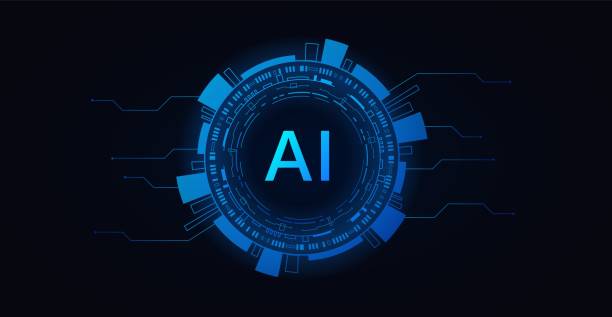
Applications of Artificial Intelligence in Various Industries
Artificial intelligence is rapidly penetrating various industries and has a significant impact on how things are done.
In this section, we will examine some of the most important applications of #Artificial_Intelligence in various industries:
-
Health and Treatment: Artificial intelligence is used in disease diagnosis, drug development, personalized care, and hospital management.
Artificial intelligence systems can analyze medical images with high accuracy and diagnose diseases in the early stages.
They can also suggest more effective treatments by analyzing patient data. -
Financial: In the financial industry, artificial intelligence is used for fraud detection, risk management, financial advice, and automation of banking processes.
Artificial intelligence algorithms can identify suspicious patterns in financial transactions and prevent fraud from occurring.
They can also suggest more profitable investments by analyzing market data. -
Production: Artificial intelligence is used in optimizing production processes, quality control, predicting equipment failure, and industrial robotics.
Artificial intelligence systems can increase the efficiency of production lines and reduce costs by analyzing production data.
They can also use machine vision to identify product defects and prevent defective products from leaving the production line. -
Transportation: Artificial intelligence is used in the development of self-driving cars, optimization of transportation routes, traffic management, and logistics services.
Self-driving cars can understand their surroundings using artificial intelligence and drive without human intervention.
Artificial intelligence systems can suggest more optimal routes for the transport of goods and passengers by analyzing traffic data. -
Retail: Artificial intelligence is used in providing personalized shopping experiences, predicting demand, inventory management, and customer service automation.
Artificial intelligence systems can suggest products and services that customers are interested in by analyzing their purchase data.
They can also prevent shortages or surpluses in inventory by predicting demand and increase customer satisfaction.
These are just a few examples of the widespread applications of artificial intelligence in various industries.
With the advancement of technology, it is expected that artificial intelligence will play a more important role in our lives and help to solve complex problems and improve the quality of life.
Machine Learning and Deep Learning Differences and Applications
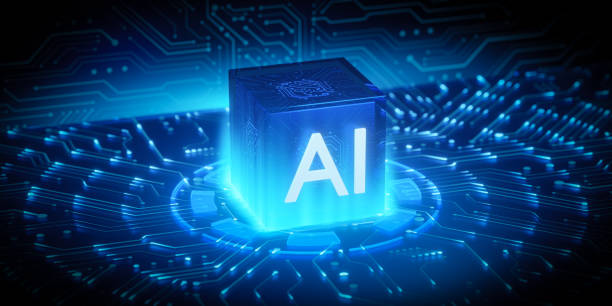
Machine Learning and Deep Learning Differences and Applications
Machine Learning and Deep Learning are two related concepts in the field of artificial intelligence, but there are fundamental differences between them.
Machine learning allows systems to learn from data and improve their performance without explicit programming.
While deep learning is a subset of machine learning that uses artificial neural networks with multiple layers to analyze data.
Key differences between machine learning and deep learning:
-
Need for data: Deep learning requires a very large amount of data for training, while machine learning can work with a smaller amount of data.
-
Need for feature engineering: In machine learning, it is usually necessary for important data features to be extracted manually by experts.
While in deep learning, neural networks can automatically extract important features from the data. -
Model complexity: Deep learning models are usually more complex and deeper than machine learning models.
This complexity allows them to identify more complex patterns in the data. -
Processing power: Training deep learning models requires very high processing power, usually graphics processing units (GPUs) are used.
While training machine learning models usually requires less processing power.
Applications of Machine Learning:
-
Spam detection
-
Predicting customer churn rate
-
Product Recommendations
Applications of Deep Learning:
-
Facial recognition
-
Language translation
-
Self-driving cars
In summary, machine learning is a broad field that includes various algorithms for learning from data.
Deep learning is a subset of machine learning that uses deep neural networks to analyze data and is usually used to solve more complex problems that require a large amount of data.
table {
border-collapse: collapse;
width: 100%;
border: 1px solid #ddd;
}
th, td {
text-align: left;
padding: 8px;
border: 1px solid #ddd;
}
th {
background-color: #f2f2f2;
}
tr:nth-child(even) {
background-color: #f2f2f2;
}
| Feature | Machine Learning | Deep Learning |
|---|---|---|
| Data Requirement | Less | More |
| Feature Engineering | Necessary | Automatic |
| Model Complexity | Less | More |
| Processing Power | Less | More |
Natural Language Processing (NLP) Understanding and Generating Language by Machine

Natural Language Processing (NLP) Understanding and Generating Language by Machine
Natural Language Processing (NLP) is a branch of #Artificial_Intelligence that allows machines to understand and generate human language.
This field includes a wide range of tasks, including machine translation, sentiment analysis, text summarization, and question answering.
Main steps in natural language processing:
-
Tokenization: Dividing the text into smaller units such as words or phrases.
-
Part-of-Speech Tagging: Determining the grammatical role of each word in the sentence (such as noun, verb, adjective).
-
Named Entity Recognition: Identifying and categorizing named entities such as people, organizations, locations, and dates.
-
Parsing: Analyzing the grammatical structure of the sentence and the relationships between words.
-
Sentiment Analysis: Determining the emotions and attitudes present in the text (such as positive, negative, neutral).
Applications of Natural Language Processing:
-
Machine translation: Automatic translation of text from one language to another.
-
Virtual assistants: Answering questions and performing tasks based on voice or text commands.
-
Chatbots: Communicating with users via text or voice and providing automated responses.
-
Social media analysis: Analyzing users’ opinions and attitudes on social media.
-
Text summarization: Producing short and accurate summaries of long texts.
Natural language processing is an active and evolving field that has the potential to create fundamental changes in how we interact with machines.
With advances in algorithms and the increasing volume of data available, it is expected that NLP systems will be able to understand and generate human language with greater accuracy and fluency.
Are you tired of losing business opportunities due to not having a professional corporate website?
Rasaweb helps you with a professional corporate website design:
✅ Build a powerful and trustworthy image of your brand
✅ Turn website visitors into loyal customers
⚡ Get a free consultation now!
Computer Vision Training the Machine to See

Computer Vision Training the Machine to See
Computer Vision is a branch of #Artificial_Intelligence that allows machines to understand and interpret images and videos.
The main goal of computer vision is to develop systems that can extract useful information from visual data and perform tasks that typically require human vision.
Main steps in computer vision:
-
Image Acquisition: Collecting images and videos through cameras or other visual sensors.
-
Image Preprocessing: Improving the quality of images using techniques such as noise removal, contrast adjustment, and color correction.
-
Feature Extraction: Extracting important features from images such as edges, corners, and textures.
-
Object Detection: Identifying and locating objects in images.
-
Image Segmentation: Dividing the image into different regions based on visual features.
Applications of Computer Vision:
-
Facial recognition: Identifying and verifying the identity of people based on facial images.
-
Self-driving cars: Understanding the surrounding environment and making decisions about how to drive.
-
Quality control: Identifying defects in manufactured products.
-
Medical imaging: Diagnosing diseases and abnormalities in medical images.
-
Video surveillance: Monitoring public and private places and identifying suspicious activities.
Computer vision is a dynamic and growing field that, with the advancement of algorithms and the increase in processing power, will be able to solve more complex problems and provide newer applications.
This technology has the potential to create fundamental changes in various industries, including manufacturing, transportation, healthcare, and security.
Artificial Intelligence and Ethics Challenges and Considerations
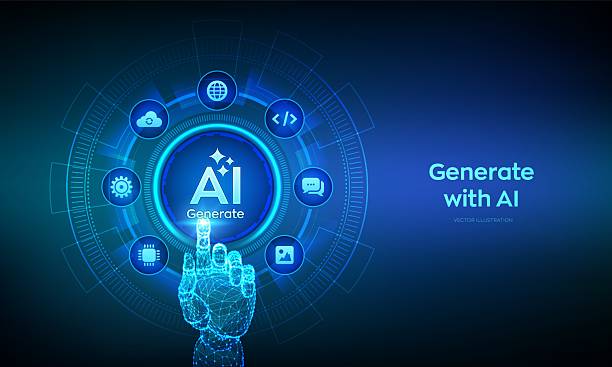
Artificial Intelligence and Ethics Challenges and Considerations
The development and use of #Artificial_Intelligence bring important ethical challenges and considerations that must be addressed.
With the advancement of technology, artificial intelligence systems are capable of making more complex decisions that can have significant impacts on the lives of individuals and communities.
Some of the ethical challenges associated with artificial intelligence:
-
Discrimination and inequality: Artificial intelligence algorithms can reinforce existing biases in training data and lead to unfair decision-making.
-
Privacy: The collection and analysis of personal data by artificial intelligence systems can violate the privacy of individuals.
-
Accountability: In the event of an error or damage caused by an artificial intelligence system, it is difficult to determine responsibility and accountability.
-
Security: Artificial intelligence systems can be attacked and used for malicious purposes.
-
Employment: Automation of jobs by artificial intelligence can lead to job loss and increased economic inequality.
Important ethical considerations in the development and use of artificial intelligence:
-
Transparency: Artificial intelligence algorithms should be understandable and explainable.
-
Justice: Artificial intelligence systems should operate fairly and without discrimination.
-
Privacy: Personal data should be respected and protected.
-
Security: Artificial intelligence systems should be protected against attacks and misuse.
-
Accountability: There should be mechanisms for determining responsibility and accountability in the event of an error or damage.
To address these challenges and ensure the ethical use of artificial intelligence, there is a need to develop appropriate laws and regulations, educate and raise awareness among the general public, and collaborate between experts, policymakers, and civil society.
The Future of Artificial Intelligence Prospects and Possibilities
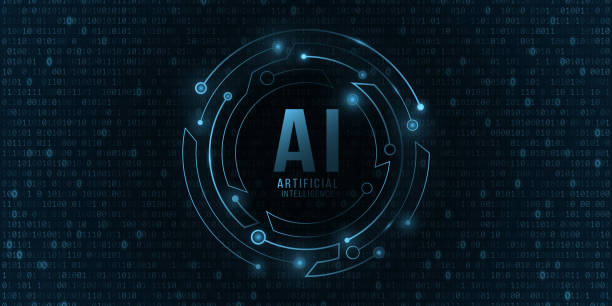
The Future of Artificial Intelligence Prospects and Possibilities
The future of #Artificial_Intelligence is very bright and full of possibilities.
With the advancement of technology and the increase in processing power, it is expected that artificial intelligence systems will be able to solve more complex problems and provide newer applications.
In this section, we will examine some of the most important prospects and possibilities related to the future of artificial intelligence:
-
General Artificial Intelligence (AGI): Achieving general artificial intelligence (AGI) that is capable of performing any task that a human can perform is one of the ambitious goals in the field of artificial intelligence.
Although there is still a long way to go to achieve AGI, recent advances in deep learning and other related fields have raised hopes.
AGI can have a profound impact on our lives and lead to fundamental changes in the economy, politics, and society. -
Explainable AI (XAI): As artificial intelligence systems become more complex, it becomes more difficult to understand how they make decisions.
Explainable AI (XAI) seeks to develop algorithms that can explain their decision-making process in a transparent and understandable way.
XAI can increase trust in artificial intelligence systems and help us avoid potential biases and errors. -
Collaborative AI: Collaborative AI seeks to develop systems that can collaborate effectively with humans and assist them in performing tasks.
These systems can be used in various fields such as healthcare, education, and manufacturing and help to improve efficiency and quality of life. -
Ethical AI: With the increasing power and impact of artificial intelligence, attention to ethical issues related to this technology becomes more important.
Ethical AI seeks to develop systems that operate fairly, transparently, and responsibly and respect human values.
To achieve ethical artificial intelligence, there is a need for collaboration between experts, policymakers, and civil society.
In addition to these prospects, artificial intelligence is expected to play a more important role in various fields such as health, education, transportation, energy, and the environment and help to solve complex problems and improve the quality of life.
However, to realize this potential, there is a need to invest in research and development, develop appropriate laws and regulations, and educate and raise awareness among the general public.
table {
border-collapse: collapse;
width: 100%;
border: 1px solid #ddd;
}
th, td {
text-align: left;
padding: 8px;
border: 1px solid #ddd;
}
th {
background-color: #f2f2f2;
}
tr:nth-child(even) {
background-color: #f2f2f2;
}
| Aspect | Prospect |
|---|---|
| General Artificial Intelligence (AGI) | Achieving systems capable of performing any task like humans. |
| Explainable AI (XAI) | Developing algorithms that explain their decision-making process transparently. |
| Collaborative AI | Creating systems that collaborate effectively with humans. |
| Ethical AI | Developing systems that operate fairly and responsibly. |
How to Learn Artificial Intelligence Learning Resources and Paths

How to Learn Artificial Intelligence Learning Resources and Paths
Learning #Artificial_Intelligence is an exciting and challenging journey.
Fortunately, there are many resources and learning paths for those interested in this field.
In this section, we will examine some of the most important artificial intelligence learning resources and paths:
-
Online courses: Online educational platforms such as Coursera, edX, and Udemy offer various courses in the field of artificial intelligence, machine learning, and deep learning.
These courses typically include educational videos, exercises, projects, and quizzes and help you learn the basic concepts and strengthen your practical skills. -
Books: There are many books in the field of artificial intelligence and machine learning that can help you to deeply understand the concepts.
Some of the popular books in this field include “Artificial Intelligence A Modern Approach” by Stuart Russell and Peter Norvig and “Deep Learning” by Ian Goodfellow, Yoshua Bengio, and Aaron Courville. -
Scientific articles: Scientific articles published in reputable conferences and journals cover the latest achievements and advances in the field of artificial intelligence.
Studying these articles can help you to deeply understand the issues and challenges in this field. -
Practical projects: The best way to learn artificial intelligence is to do practical projects.
By doing various projects, you can apply theoretical concepts in practice and strengthen your skills.
You can use the data available on the Internet and carry out projects such as image recognition, stock price prediction, or sentiment analysis. -
Online forums: Online forums such as Stack Overflow and Reddit are good places to ask questions, share experiences, and get help from other artificial intelligence enthusiasts.
By joining these forums, you can connect with a community of experts and enthusiasts and learn from their experiences.
To start learning artificial intelligence, you can start by learning the Python programming language.
Python is a popular programming language in the field of artificial intelligence and has many libraries for machine learning and deep learning.
Then you can start doing practical projects by learning the basic concepts of machine learning and deep learning.
With practice and perseverance, you can become an artificial intelligence expert.
You don’t have a company website yet and are missing out on online opportunities? With a professional corporate website design by Rasaweb,
✅ Double your business credibility
✅ Attract new customers
⚡ Free consultation for your company website!
Artificial Intelligence Development Tools Introduction and Review
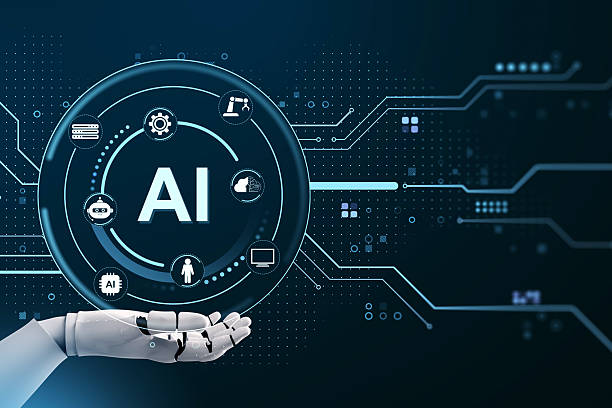
Artificial Intelligence Development Tools Introduction and Review
To develop artificial intelligence systems, various tools and frameworks are needed to facilitate the development process.
In this section, we will introduce and review some of the most important artificial intelligence development tools:
-
TensorFlow: TensorFlow is an open source machine learning framework developed by Google.
TensorFlow supports numerical calculations using data flow graphs and is suitable for developing a wide range of artificial intelligence applications, including image recognition, natural language processing, and robotics. -
PyTorch: PyTorch is an open source machine learning framework based on the Torch library.
PyTorch is very popular for research and development in the field of deep learning due to its high flexibility and easy user interface. -
Keras: Keras is a high-level application programming interface (API) for neural networks that runs on TensorFlow, PyTorch, and other machine learning frameworks.
Keras allows developers to quickly and easily create and train deep learning models. -
Scikit-learn: Scikit-learn is an open source machine learning library that includes various algorithms for classification, regression, clustering, and dimensionality reduction.
Scikit-learn is very suitable for starting to learn machine learning due to its simplicity and practicality. -
NLTK: NLTK is a powerful natural language processing toolkit that includes functions for segmentation, part-of-speech tagging, parsing, and sentiment analysis.
NLTK allows developers to easily create natural language processing applications.
In addition to these tools, there are other tools for artificial intelligence development, each with its own features and applications.
Choosing the right tool depends on the needs and goals of your project.
Advanced Concepts in Artificial Intelligence Overview of Current Topics

Advanced Concepts in Artificial Intelligence Overview of Current Topics
The field of #Artificial_Intelligence is rapidly advancing and new concepts are constantly emerging.
In this section, we will review some of the advanced concepts and current topics in artificial intelligence:
-
Reinforcement Learning: Reinforcement learning is a machine learning method in which an agent interacts in an environment and learns how to act by receiving a reward or penalty in order to maximize its reward.
Reinforcement learning is well-suited for solving problems such as gaming, robotics, and system control. -
Generative Adversarial Networks (GANs): Generative Adversarial Networks (GANs) is a deep learning method that involves two neural networks: a generator network that tries to generate new data that is similar to the real data, and a discriminator network that tries to distinguish the data generated by the generator network from the real data.
GANs are used to generate realistic images, sounds, and texts. -
Self-Supervised Learning: Self-Supervised Learning is a machine learning method in which the model is trained using unlabeled data.
In this method, a pretext task is defined that the model must solve, and by solving this task, the model learns to extract useful features from the data.
Self-supervised learning is well-suited for solving problems such as image recognition, natural language processing, and computer vision. -
Explainable AI (XAI): Explainable AI seeks to develop algorithms that can explain their decision-making process in a transparent and understandable way.
XAI can increase trust in artificial intelligence systems and help us avoid potential biases and errors. -
Edge AI: Edge AI refers to running artificial intelligence algorithms on edge devices such as mobile phones, cameras, and sensors.
This method helps to reduce latency, increase privacy, and reduce energy consumption.
These are just a few examples of advanced concepts and current topics in artificial intelligence.
With the advancement of technology, it is expected that newer concepts will also emerge in this field and help to solve complex problems and improve the quality of life.
FAQ
| Question | Answer |
|---|---|
| 1. What is Artificial Intelligence (AI)? | It is a branch of computer science that aims to create machines capable of simulating human intelligence and performing tasks that require human thinking, such as learning, problem-solving, and decision-making. |
| 2. What are the main types of artificial intelligence? | It can be classified into weak artificial intelligence (Narrow AI) that focuses on a specific task, general artificial intelligence (General AI) that possesses comprehensive human capabilities, and super artificial intelligence (Super AI) that surpasses human intelligence. |
| 3. Mention some common artificial intelligence applications in our daily lives. | Includes voice assistants (such as Siri and Alexa), recommendation systems (such as Netflix and Amazon), self-driving cars, facial recognition systems, and spam filters. |
| 4. What is the difference between artificial intelligence and machine learning? | Artificial intelligence is the broader concept of creating intelligent machines, while machine learning is a subset of artificial intelligence that focuses on enabling systems to learn from data without explicit programming. |
| 5. What is deep learning? | It is a subset of machine learning that uses multi-layered artificial neural networks (deep neural networks) to process data and discover complex patterns, and is used in image and speech recognition. |
| 6. What are the most important benefits of artificial intelligence? | Improving efficiency and productivity, automating repetitive tasks, making better decisions based on the analysis of big data, and developing solutions to complex problems in fields such as medicine and science. |
| 7. What are the main challenges facing the development and deployment of artificial intelligence? | Includes the need for huge amounts of high-quality data, privacy and security issues, bias in data and algorithms, and high development and maintenance costs. |
| 8. Does artificial intelligence raise ethical or social concerns? | Yes, it raises concerns regarding privacy, algorithmic bias, job loss due to automation, responsibility for errors made by intelligent systems, and the need for a regulatory framework. |
| 9. How can artificial intelligence affect the future of the labor market? | It can lead to the automation of some routine tasks, but it will also create new jobs that require advanced skills in the development, operation, and maintenance of artificial intelligence systems. |
| 10. What are some modern or promising technologies in the field of artificial intelligence? | Includes advanced natural language processing (NLP) (such as large language models such as ChatGPT), computer vision, robotics, and generative AI. |
And other Rasaweb advertising agency services in the field of advertising
Smart Custom Software: A dedicated service for sales growth based on Google Ads management.
Smart Content Strategy: A professional solution to increase click-through rate with a focus on SEO-oriented content strategy.
Smart Marketing Automation: A professional solution to improve SEO ranking with a focus on attractive user interface design.
Smart Google Ads: A new service to increase SEO ranking improvement through precise audience targeting.
Smart Marketing Automation: A new service to increase digital branding through SEO-oriented content strategy.
And more than a hundred other services in the field of internet advertising, advertising consulting, and organizational solutions
Internet Advertising | Advertising Strategy | Advertorial
Resources
What is artificial intelligence and how does it work?
,What is artificial intelligence? Everything About AI in Simple Terms
,

